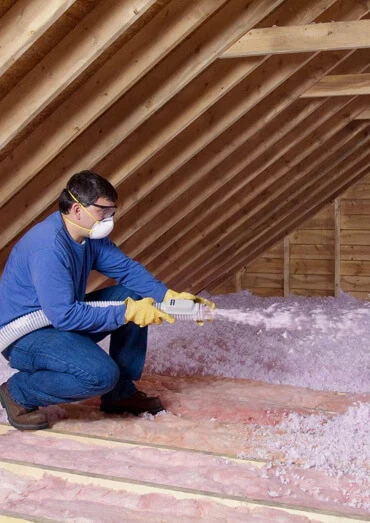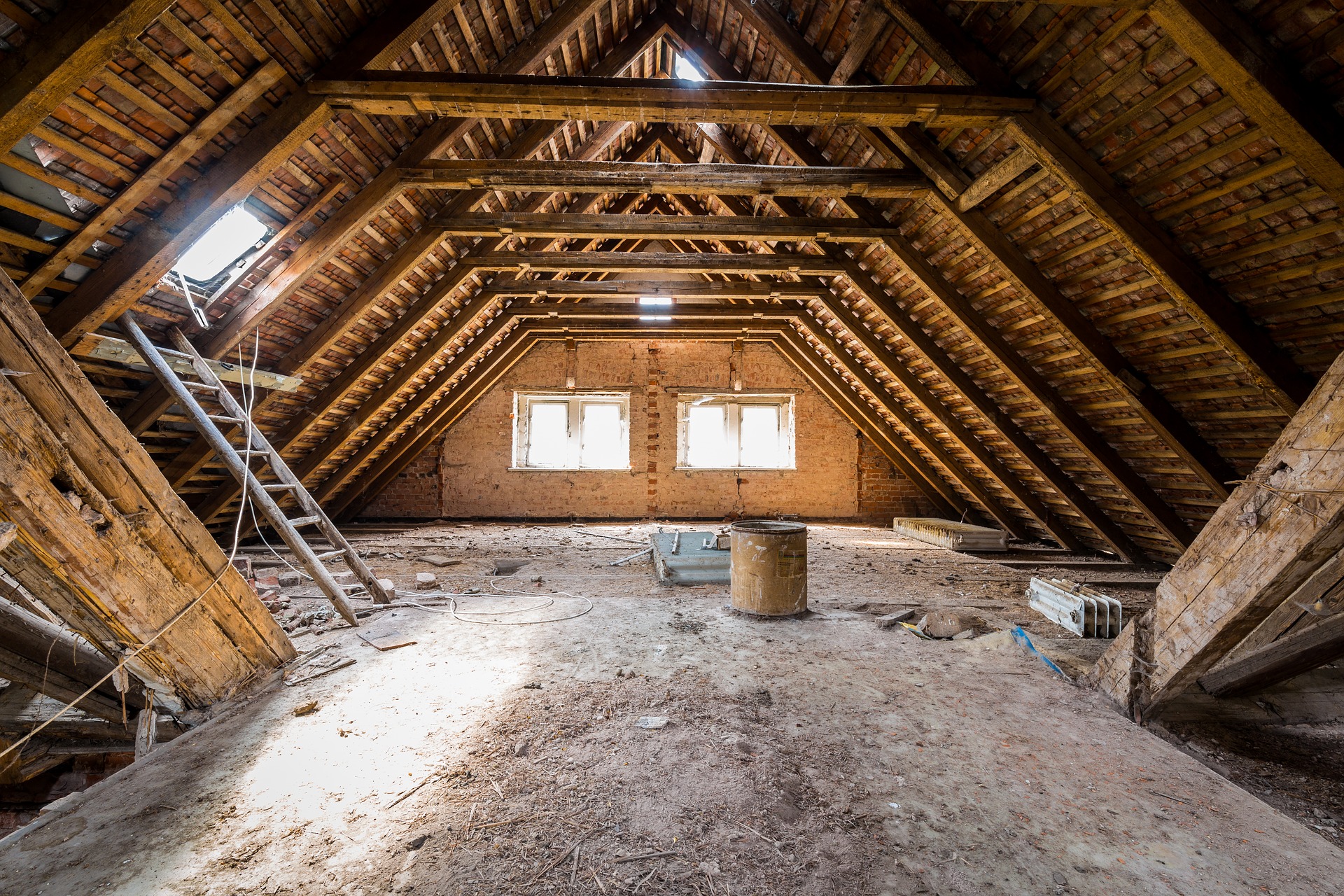Attic Insulation DFW: The Secret to Lower Energy Expenses and Improved Home Convenience
Attic Insulation DFW: The Secret to Lower Energy Expenses and Improved Home Convenience
Blog Article
Discover the Various Sorts Of Attic Insulation and Their Distinct Advantages for Your Home's Energy Performance

Fiberglass Insulation
Fiberglass insulation is just one of one of the most typically made use of products for attic insulation due to its exceptional thermal performance and cost-effectiveness. Made up of small glass fibers, this product properly traps air, creating a protecting barrier that helps maintain constant indoor temperature levels. Its high R-value per inch makes it particularly effective at standing up to heat transfer, which is essential for power preservation in homes.
Installation of fiberglass insulation is reasonably simple, usually available in batts or loose-fill types, suiting different attic room arrangements. In addition, it is non-combustible and immune to moisture, minimizing the threat of mold advancement. This durability adds to its longevity, making fiberglass a feasible long-term investment for property owners.
Additionally, fiberglass insulation is often produced from recycled materials, which improves its eco-friendliness. The material can likewise add to soundproofing, decreasing sound transfer in between spaces. While it is necessary to wear protective gear throughout installation to avoid irritation from the fibers, the general benefits of fiberglass insulation, including energy savings and ecological factors to consider, make it a prominent selection for boosting attic room efficiency and promoting a comfortable living setting.
Spray Foam Insulation
Spray foam insulation is a very reliable choice for attic insulation, known for its superior air securing and thermal efficiency. This ingenious insulation product is composed of a mix of isocyanate and polyol material, which, when integrated, broadens quickly to fill voids and dental caries in the attic room area. Its capability to follow various surface areas guarantees a continual barrier against air leaks, significantly reducing heat loss during colder months and warmth gain throughout warmer seasons.
One of the vital benefits of spray foam insulation is its high R-value per inch, which means it gives exceptional thermal resistance in a relatively slim application. This is especially beneficial in attic rooms where area is frequently restricted. Furthermore, spray foam can help decrease moisture build-up, reducing the threat of mold and mold growth, which can be detrimental to both the structure and interior air quality.
While the initial expense of spray foam insulation may be higher than conventional choices, its lasting energy savings, paired with enhanced convenience and improved home value, make it a rewarding financial investment for property owners looking for boosted energy performance. Attic Insulation DFW. Overall, spray foam insulation sticks out as an effective service for optimizing attic room insulation
Cellulose Insulation

Cellulose insulation is a preferred option for attic room insulation, primarily made up of recycled paper products treated with fire retardants. This eco-friendly choice is understood for its outstanding thermal performance, effectively minimizing heat transfer in both summer season and winter season. The dense structure of cellulose allows it to fill up gaps and spaces in attic room spaces, offering a seamless barrier versus air leakages.
One of the significant advantages of cellulose insulation is its capability to stand up to mold and bugs, owing to the fire retardant treatments utilized during production. Additionally, it flaunts a high R-value per inch, which translates right into premium energy effectiveness. Property owners can expect lower heating and cooling expenses as a result of improved insulation.
Installment is normally accomplished via blowing loose cellulose into the preferred location, enabling for a effective and fast process. This approach additionally reduces interruption to the existing structure. Furthermore, cellulose insulation has a fairly low ecological influence, as its production procedure makes use of recycled products, adding to sustainable structure techniques.
Rock Woollen Insulation
Amongst the various options for attic insulation, rock wool, likewise recognized as mineral woollen, stands out due to its remarkable thermal and acoustic performance. Made from natural or recycled products, rock wool is produced by melting rock and rotating it into fibers, leading to an item that supplies superb insulation residential properties.
Among the considerable advantages of rock wool insulation is its high R-value, which shows its performance in resisting heat flow. This particular not just improves power efficiency yet additionally adds to preserving a comfy interior temperature level year-round. Furthermore, rock woollen is naturally fireproof, making it a more secure option for homes as it can endure high temperatures without melting or launching toxic fumes.
In addition, rock wool insulation excels in soundproofing capabilities, properly decreasing sound transmission between spaces and from outdoors sources. In general, rock wool insulation gives a detailed remedy for improving power performance, safety, and comfort in domestic setups.
Glowing Obstacle Insulation
Radiant barrier insulation acts as a reliable service for lessening warmth transfer in attics, especially in warmer climates. This type of insulation works by showing convected heat far from living rooms, therefore lowering the amount of heat that goes into a home during heat - Attic Insulation DFW. Typically composed of a highly reflective material, such as light weight aluminum foil, glowing obstacles are mounted in attics, dealing with the roof covering, where they can obstruct inbound warmth from the sunlight
The main benefit of glowing obstacle insulation is its capacity to reduced air conditioning expenses. By showing warmth as opposed to absorbing it, glowing Full Report obstacles can assist preserve a much more steady indoor temperature level, minimizing the workload on a/c systems. This effectiveness equates right into lower power have a peek here costs and boosted convenience for property owners.
In addition to energy cost savings, radiant obstacles can likewise contribute to boosted interior air high quality. By decreasing heat buildup, they aid decrease moisture levels, which can protect against mold development and improve overall air circulation. When mounted appropriately, glowing barrier insulation can be a vital addition to any type of energy-efficient home, making it a worthy factor to consider for house owners aiming to enhance their attic room insulation approach.
Verdict
Finally, understanding the numerous sorts of attic insulation-- fiberglass, spray foam, cellulose, rock woollen, and glowing obstacles-- allows house owners to make enlightened choices relating to power efficiency. Each insulation type offers special benefits, such as superior thermal resistance, wetness monitoring, and audio attenuation. By selecting the appropriate insulation product, significant decreases in power expenses can be attained, together with enhancements in indoor convenience. Eventually, the appropriate selection adds to a more sustainable living atmosphere and promotes total power conservation.

In conclusion, understanding the different kinds of attic insulation-- fiberglass, spray foam, cellulose, rock wool, and radiant obstacles-- allows home owners to make educated choices concerning power efficiency.
Report this page